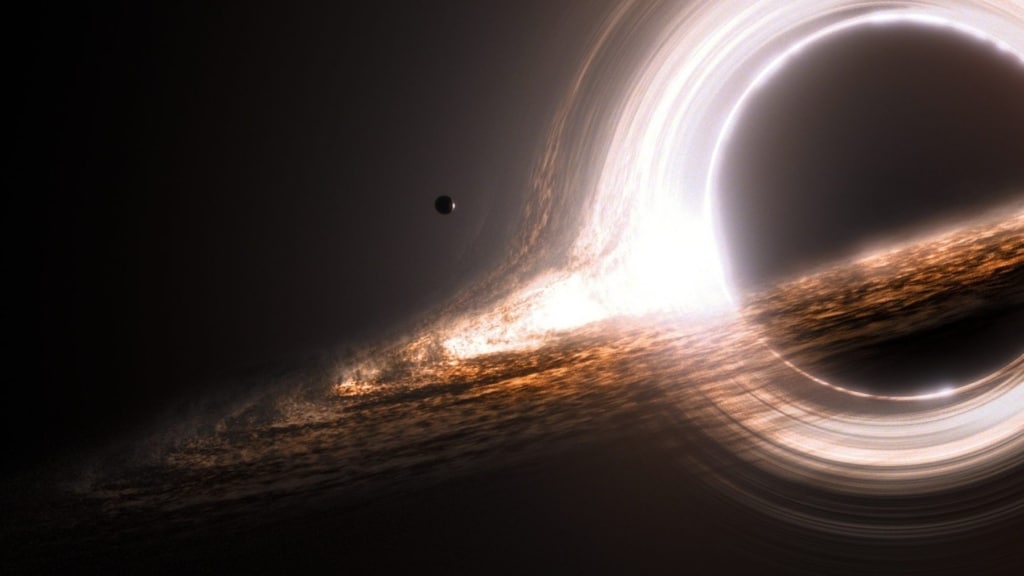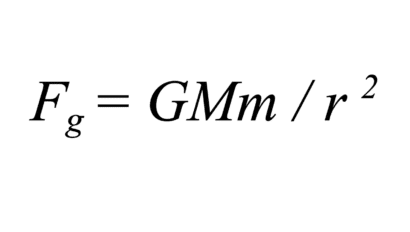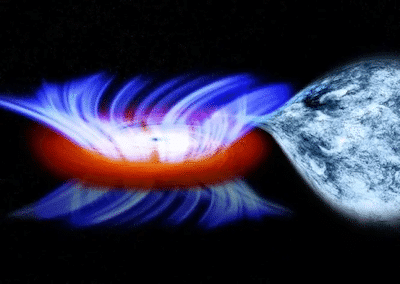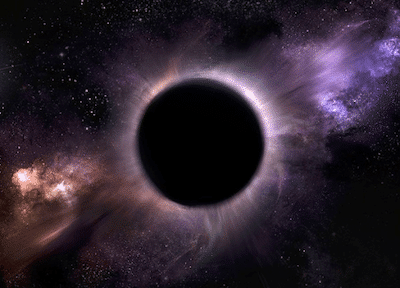
Unveiling the Mysteries of Black Holes: Gravity, Density, Mass, and Beyond
Space is a complex but thrilling topic, and black holes continue to fascinate many space lovers around the globe. When exploring the magic of space, you might wonder, what is a black hole made out of? Starting with the basics can help you gain an understanding and appreciation for the universe’s unique marvels.
Ready to know more about black holes? Let’s delve into the science behind them. We’re breaking down all the must-know terms, from gravity and mass to escape velocity and black hole detection.
Interested in learning more about these exciting topics firsthand? Check out our awesome options at AstroCamp, a science and adventure camp designed to spark a love of space—and so much more. Learn more about our Geek Week Camp.
Table of Contents
- What is a Black Hole?
- How Strong is Gravity in a Black Hole?
- Escape Velocity of a Black Hole
- Does a Black Hole Have Mass?
- How Dense Are Black Holes?
- What is the Singularity of a Black Hole?
- How Are Black Holes Detected?
- 3 Types of Black Holes
- Black Holes Explained
- Black Holes FAQs
What is a Black Hole?
Black holes are areas with massive gravitational pull, made up of an event horizon (surface) and a singularity (center). In fact, not even light can escape from them due to the enormous amount of mass being crammed into such a small space.
They’re created by the death of a massive star, which happens when the star runs out of fuel and may involve some other specifics scientists have yet to discover!
Black holes explained – there are two main parts: the center and the event horizon.
The center of the black hole is called the singularity. This point is extremely dense and small and is a bit of a mystery as we can’t quite comprehend it using traditional knowledge of physics.
Black holes also have an event horizon, which is essentially its surface and is a boundary we can’t see beyond.
How Strong is Gravity in a Black Hole?
Gravity plays a huge role in understanding how black holes work. To have black holes explained simply, you must understand just how strong gravity is inside them. In fact, gravity in a black hole is about 1.6 trillion g’s. That’s a lot of force! Let’s explore the details.
First, Understand the Force of Gravity
The first step on the road to understanding black holes is understanding how gravity works. An object with mass will cause a bend in spacetime, affecting surrounding objects. This effect is what causes gravity.
The more mass something has, the more gravity it produces. The force of gravity gets weaker the farther you get from the center of mass proportional to the inverse of its distance squared. This likely sounds confusing. Maybe it’s easier if you see the equation for calculating the force of gravity:

In this equation, M is the mass of the larger object, m is the mass of the smaller object, G is the universal gravitational constant, and r is the distance between the two objects. If you double the distance between two objects, then the force of gravity is ¼ what it was before. If you triple it, then the force of gravity is only ⅑ the original.
Jumping up in the air on Earth is a short-lived journey. An average person starts their upward flight with a speed of about 7 miles per hour. Our planet’s gravity quickly overwhelms that momentum, and the jumper lands.
However, if someone could jump at 25,000 miles per hour, they could escape Earth’s gravitational pull and continue into space! Every planet and star has a special speed requirement to escape its gravity. We call this speed the escape velocity.
Gravitational Force in a Black Hole, Explained
Black holes are huge and their concentrated mass gives them an extremely large density. This also affects the black hole’s gravity, giving them a strong gravitational force. You can use Newton’s Law of Universal Gravitation and the same gravity equation from above to calculate the gravitational force of a black hole (what we talked about above).
In the equation, F represents the gravitational force, G is the gravitational constant, r is the distance, and both M and m are the masses. Check out this handy Gravitational Force Calculator for help.
So, how do black holes stand up against the other physics of space? Are black holes faster than the speed of light?
While there is still a lot to be understood about these mysterious objects, scientists believe that black holes move through the universe at roughly 17,500 miles per second, which is only a fraction of the speed of light.
Escape Velocity of a Black Hole
To understand the velocity of a black hole, you must reference the event horizon. The event horizon signifies the end of the black hole and is considered a spherical boundary.
In order to escape the gravitational field of a massive object, you need to attain a specific speed, called its escape velocity. It’s calculated using the force of gravity, taking into account the mass of the large object and how far away you are. Once something is going at minimum the escape velocity, then it is no longer captured by the massive object.
Larger objects have higher escape velocities; it would take a monstrous 133,000 miles per hour (mph) takeoff to break free of Jupiter’s gravitational pull. The sun would shut down any jump slower than 1.4 million mph!
A black hole has so much gravity that not even light, the fastest thing in the universe, can escape it. Light travels at a whopping 670,000,000 mph. As we have seen, the bigger the planet or star, the faster something has to go to overcome its gravity. So black holes must be HUGE, right? Well, sort of.
Does a Black Hole Have Mass?
Black holes have a LOT of mass, which is why they have so much gravity. So much, in fact, that atoms are actually crushed to fill in the empty space. Sometimes a dying star has enough mass (and gravity) to crush atoms, but not quite enough to keep light from escaping.
In these cases, a neutron star is born. These strange objects contain as much mass as the sun but are squeezed into a space smaller than New York City. Put another way, a soup can of the stuff would weigh about as much as the mountain that AstroCamp lives on!
Having fun? Experience even more of this at AstroCamp’s Geek Week Summer Camp!
How Dense Are Black Holes?
The density of black holes is an intriguing, yet puzzling topic. Black holes are extremely dense, which ensures that not even light can escape. In fact, the density of a black hole is infinite, which continues to perplex scientists, as this disrupts our understanding of the universe.
Density is the relationship between the mass of an object and its volume, which is the amount of space the object occupies. Density is calculated based on the mass, size, and arrangement of atoms, which make up everything around us.
To further understand the concept of density in a black hole, you must further explore its singularity.
What is the Singularity of a Black Hole?
When the most massive stars in the universe go supernova, the force of the explosion causes the core of the star to get smaller and smaller, crushing atoms and even neutrons themselves down and packing it all into a volume of 0. This point of infinite density creates such a huge bend in spacetime that it creates a singularity.
At a certain distance away from this singularity, the escape velocity reaches the speed of light. As defined by the theory of relativity, nothing in the universe can go faster than the speed of light. So if the escape velocity of this object at a certain distance is higher than that, then not even light can escape the singularity.
With no light escaping, the object and the space around it gives off no light. This is the black hole.
How Are Black Holes Detected?
Everything that we know about space comes from the light that galaxies, stars, and other objects give off. However, black holes don’t let light escape, so how do we find them? One way is to wait for the black hole to get in between us and a distant object. Since gravity can bend light, this results in a phenomenon called gravitational lensing.
Can You See a Black Hole With a Telescope?
You unfortunately cannot see a black hole with a telescope.
Most of us have experienced using a lens in some way, whether it was using glasses, cameras, or our favorite, telescopes. Telescopes can be an awesome way to explore outer space from afar and can help us understand our place in the universe.
However, you can’t see a black hole with a telescope.
A lens is a piece of glass or other transparent substance with curved sides for concentrating or dispersing light rays. They have the ability to bend light! Did you know that gravity can bend light in the same way? We call this gravitational lensing—when a large massive object, like a black hole or galaxy, passes in front of our view of a distant light source and a distant galaxy.
It bends the distant light in different ways, sometimes creating two or more images or creating an Einstein ring, a complete ring of the image. Looking straight through the glass shape at the bottom of the stem of a wine glass, it has almost exactly the same optical properties as a massive galaxy or black hole.
However, the black hole at the center of our galaxy was found another way: by looking at how stars in its neighborhood are moving.
They whiz around in circles as if pulled by an immense central object, but we can’t see anything there. Calculating the mass needed to move the stars that fast reveals the invisible culprit: a black hole.
3 Types of Black Holes
Black holes can be separated into three categories and this distinction is based on their mass. Scientists are constantly researching and learning new things, which means they may continue to adjust these categories.
1. Stellar Mass Black Holes

Stellar mass black holes are created when a star collapses and explodes as a supernova. If the star is extremely large, more than twenty times the Sun’s mass, it will become a stellar mass black hole. The mass of these black holes can range from 3 to 50 times the mass of our sun.
Additionally, these black holes can continue to grow over time. This happens when they collide with other black holes and stars. These giants can usually be found next to the many stars in the universe and scientists estimate that there are millions of them in our own galaxy.
2. Intermediate Mass Black Holes

Intermediate black holes are quite mysterious as scientists originally thought that this type of black hole might not even exist at all. Now, many believe that they are out there in the universe, but are simply extremely rare.
They’re categorized as black holes that are about 50 to 50,000 times the mass of our sun. They fall in the middle on the size scale between stellar mass black and supermassive black holes.
Why the rarity? It seems that it’s difficult to find proof of objects being able to collapse down to that size as stars are often too small to create an intermediate black hole.
3. Supermassive Black Holes

Supermassive black holes are found in most large galaxies and this is true for the Milky Way as well. These colossal black holes are present at the center of the galaxy and can be billions of times the Sun’s mass.
There is still quite a lot of confusion surrounding supermassive black holes, as it has been difficult to prove where they come from. Some scientists think that many of these were formed during the beginning of our universe’s creation.
These black holes are similar to stellar masses, as they also get bigger by pulling in larger objects. When galaxies collide, they can also combine with other supermassive black holes.
Black Holes, Explained
There’s a lot more that goes into defining black holes, such as their spin, but that’s just icing on the cake. There you have it. There’s so much more to learn about black holes, but knowing even this much gives you the tools you need to understand them at a fundamental level.
Interested in learning more? Come join us at AstroCamp and experience our science and space labs, outdoor adventures, and more. Learn teamwork, problem-solving skills, and of course, have some fun. Sign up for Geek Week Camp or explore our other exciting overnight camps in Southern California.
Black Holes Explained: FAQs
1. How Many Earths Can Fit in a Black Hole?
With a mass of about the size of four million suns, NASA says a few million Earths could likely fit inside it. There’s a giant black hole in the center of the Milky Way galaxy. Its name is Sagittarius A and its mass is quite shocking.
2. How Many Black Holes Are In The Milky Way?
While there isn’t a definite answer for how many black holes are in our galaxy, there’s currently an estimate of 50 stellar mass black holes. However, this number could actually be much higher.
Researchers theorize that there could be up to 100 million black holes in the Milky Way alone. In order to get this information, scientists must study X-ray binaries, which occur when X-rays are created through heat by black holes taking gas off of stars.
3. Do Black Holes Make Sound?
Are you wondering about black hole noise? You’re not alone. These mysterious objects have many unique features, but sound is, in fact, not included on the list. Due to their pure gravity, black holes do not make any sound at all. However, they are able to produce sound waves around them.
Expand Your Horizons at AstroCamp!
At AstroCamp, we cover a vast range of topics and activities. Come learn more about black holes, space, and other awesome science topics!
Sign up for Geek Week for the ultimate week of fun, or check out our other overnight summer camps lasting from one-week and two-week sessions.
